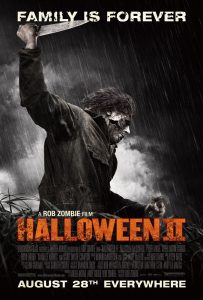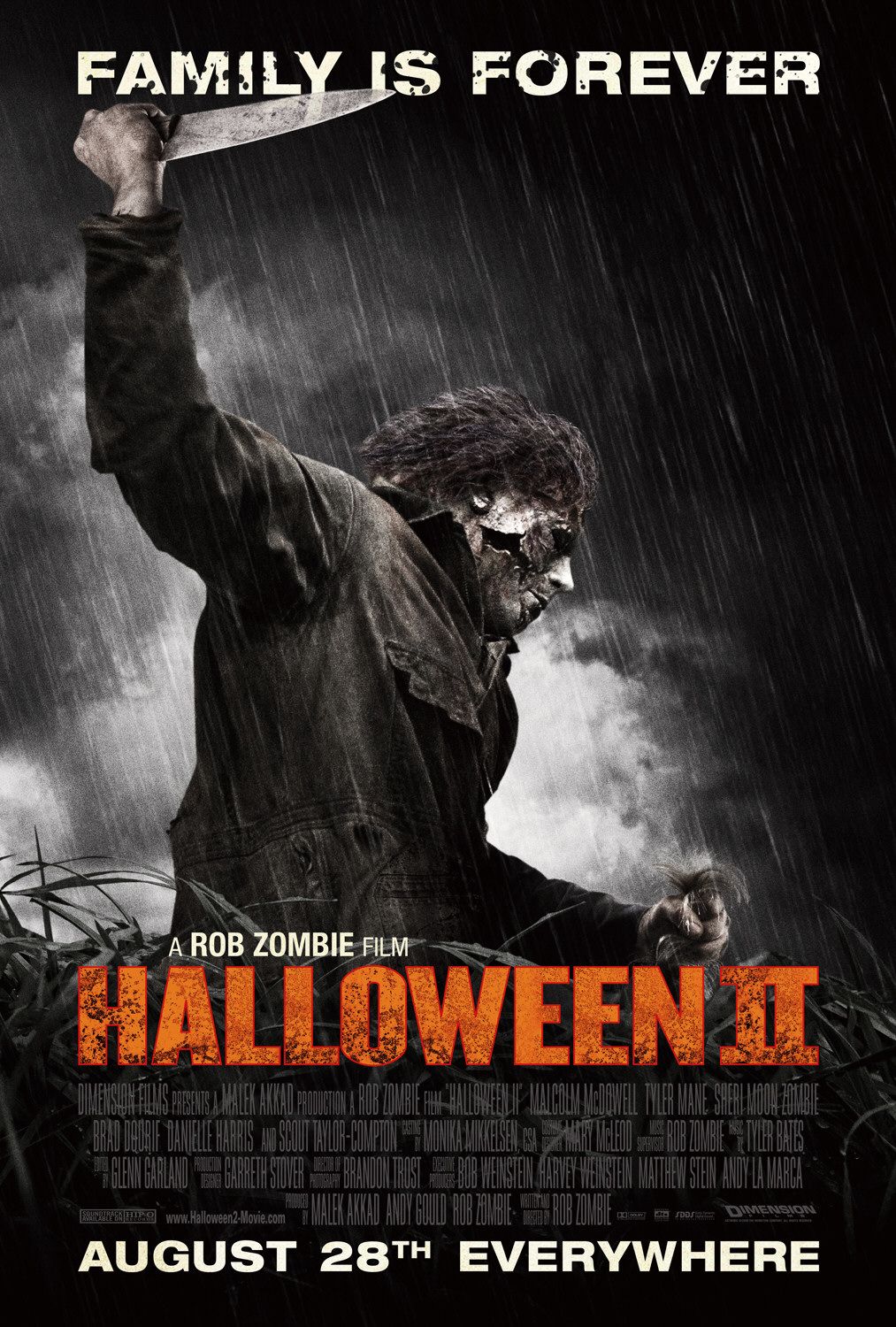
Rob Zombie should have named his latest film “Kill-****ing-Everything,” as it would have given audiences a better idea as to what to expect when paying for a ticket. It also would’ve been a signal not to expect any shred of respectability that Zombie was able to retain in his first film. Unlike the first film, which was at least intriguing if not good, Zombie relies on every horror-cliché imaginable in order to unnecessarily pad the run time and the body count under the misguided belief that greatness is measured in terms of sheer brutality.
Zombie must have decided that audiences needed an even greater reason to hate the main character after he turned her into a typically annoying teenage tramp in the first installment. As a result, Laurie has become a crust-punk vegetarian, no doubt altered by the events that transpired a year earlier. She has continuously suffered from nightmares and delusions since that fateful Halloween, and the audience is reminded of this every five minutes by dream sequences that litter the first half of the film. Meanwhile, Michael Myers has indeed survived the first film and is on a three day trek back to Haddonfield, killing any form of life that he encounters along the way. His arrival is precipitated by numerous red herrings in the form of dream sequences, and this back-and-forth pattern is continued throughout the film until he actually arrives and continues his habit of killing everything in sight.
In order to add another layer to a rather straight-forward plot, an examination of post-traumatic stress is included, as Laurie is shown coping with her life after it had been shattered the year before. This remains the greatest aspect of the film, as Laurie’s battle, even with the saturation of unnecessary dream sequences, is a gateway for audience sympathy. Apparently not satisfied with this connection, Zombie also attempts an examination of Michael Myers’s psyche, despite the perfect serial-killer development of the first film. This new examination centers on the dream interpretation of a white horse, which Michael constantly envisions alongside his deceased mother. In his visions, he is depicted as a child, and his mother instructs him to unite their family once again (meaning that he has to find Laurie).
In essence, Michael is instructed by his dead mother to kill, a blatant connection with the original Friday the 13th series that would have been impossible to have gone unnoticed by Zombie. These visions of Michael’s are also the main contributors as to why the film is a convoluted mess. The constant appearances of the white horse motif are meant as an explanation for Michael’s behavior, but they instead become a hindrance to the flow of the film. In addition, his insistence to kill everything he encounters is unexplained by his mother’s desire to reunite the family, save for a brief instance in which his mother invites him to “have some fun.” Of course, murdering everything in sight is the nature of the Michael Myers character, but as Zombie has focused on mental disease rather than the supernatural in his Halloween series, the new serial killer persona remains an insufficient justification.
By avoiding any supernatural aspect, Zombie also fails to sufficiently explain certain events in the film. It is never mentioned how Myers was able to survive a gunshot to the face without hospitalization, nor is it explained why it takes a year for Michael to return to Haddonfield. It is vaguely mentioned that the police misplaced the body in transport from the crime scene to the morgue (which is depicted in a scene that is dismissed as a dream of Laurie’s), but this appears to have occurred in the outskirts of town. The delusions that Michael suffers are also shared by Laurie in the film’s climax, which, barring any supernatural connection, simply doesn’t make any sense.
Finally, in what may be the most unforgivable aspect of all, Zombie completes his transformation of Dr. Loomis from the beloved, heroic, and selfless figure of the first series to an arrogant, self-centered egotist. Loomis serves no function in Halloween II other than to inform Laurie that she is Michael’s sister. Other than this development, he is meant as a spiteful center of rage that the audience is led to hate more than Myers, and as a result, his inclusion in the film is almost useless.
In between scenes of Laurie’s breakdown, Michael’s visions, and Loomis’s asinine ego-trips, Zombie manages to saturate the remaining run time with close-ups of excessively gory wounds, unattractive bodily features, and every squishy sound imaginable. Zombie has never been subtle with his depiction of the macabre and grotesque, but in this film, it is so excessive that it becomes apparent that he isn’t interested in any serious, albeit fictional, examination of mental illness. Rather, he seems more focused on making the audience ill. For seedy exploitation films of yesteryear, this is a perfect combination. In mainstream cinema, however, it has become a tired cliché that ran its course in the eighties.

